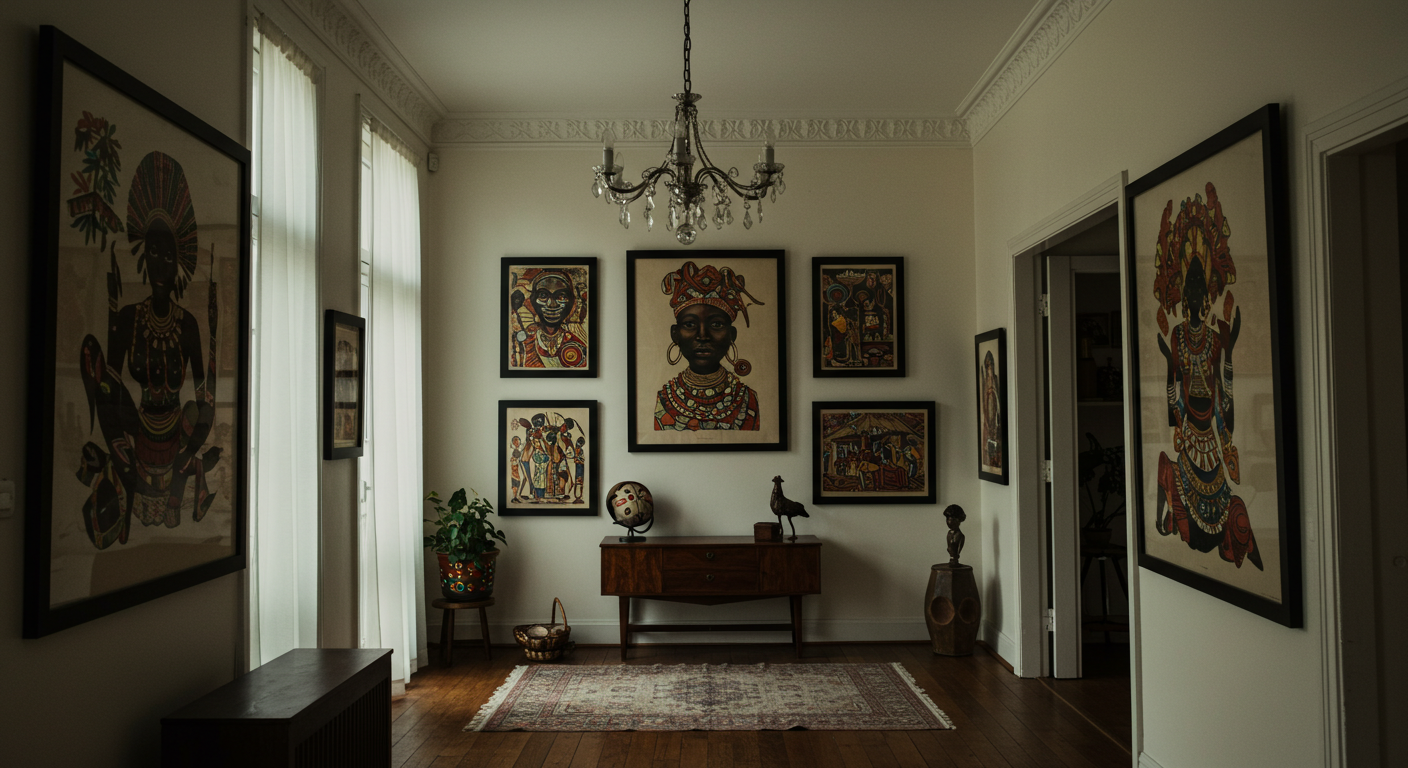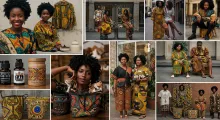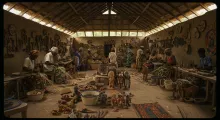Creating a home gallery filled with African art prints is more than a decorative decision — it is a bold statement of heritage, identity, and personal style. As African art continues to rise in global appreciation, more homeowners and interior decorators are seeking to incorporate traditional and contemporary African prints into their home environments. A home gallery doesn’t require a large estate or fancy frames; with careful planning and intentional selection, even a modest wall can become a compelling tribute to African visual culture.
Understanding the Power of African Art Prints
African art spans centuries, regions, and styles — from the geometric patterns of Ndebele murals to the bold storytelling of Ethiopian church paintings. African art prints typically refer to reproductions of original artworks, photographs, textile designs, or graphic reinterpretations of cultural motifs. They offer a more accessible and affordable way for art lovers to enjoy African creativity.
These prints can include:
- Tribal patterns such as Kuba cloth from the Congo or Zulu beadwork-inspired graphics.
- Contemporary African art from modern artists such as Ablade Glover, Wangechi Mutu, or Laolu Senbanjo.
- Historic artworks such as Nok terracotta illustrations or Benin bronze motifs.
- Photography prints capturing African landscapes, daily life, or iconic African people.
Curating With Intention: Choosing a Theme
The first step in building your home gallery is choosing a thematic or visual direction. Some options include:
- Regional Focus: Choose prints from a particular country or region, such as Ghanaian art, South African protest posters, or Moroccan abstract patterns.
- Color Scheme: Use the art to define or complement your room’s palette — earthy browns, sunset oranges, indigo blues, etc.
- Historical Narrative: Select works that span historical periods or showcase Africa’s evolution through colonialism, independence, and modern renaissance.
- Black Portraiture: Celebrate the dignity and diversity of African people through portrait photography and digital illustrations.
Sourcing African Art Prints
Thanks to online marketplaces and independent creators, African art prints are increasingly easy to access. Here are a few platforms to consider:
- Etsy – for handmade and digital prints from African illustrators and designers.
- Saatchi Art and Society6 – for curated, gallery-quality pieces.
- Instagram – search hashtags like #AfricanArtPrints or follow African artists directly.
- Local markets and cultural centers – where you might find framed works or limited prints.
When possible, purchase from African artists directly to ensure they benefit from the appreciation of their work.
Frame It Right: Presentation Matters
Your prints deserve to be beautifully displayed. Consider these tips:
- Uniform Frames for a clean, minimalist look.
- Mismatched Frames for an eclectic, bohemian feel.
- Matte Borders to add depth and prominence to the prints.
- Canvas Wraps or Poster Styles if you're going for a contemporary vibe.
For prints of textiles like Kente or Adinkra cloth, shadow box framing can protect the fabric while showcasing its texture.
Layout and Installation
Arrange your gallery in a way that enhances both the art and the space:
- Grid Layouts for symmetry and structure.
- Salon Style with various sizes and heights for a dynamic wall.
- Triptychs or Diptychs for storytelling through multiple panels.
- Centerpiece with accents where one bold work is surrounded by smaller, complementary ones.
Ensure the art is well-lit, either with natural light or directional gallery lights.
Mixing Mediums and Motifs
Combine prints with:
- Masks and sculptures for a 3D element.
- Textiles or woven baskets to add texture.
- African proverbs or poetry framed in calligraphic or typographic art.
This multidimensional approach creates a space that feels culturally immersive and deeply personal.
Tell Your Story
The beauty of curating a home gallery with African prints lies in the story it tells. Every piece can reflect a place you’ve visited, a people you admire, or a memory you cherish. Don’t aim for perfection — aim for authenticity. The gallery should evolve with you, your travels, and your growing knowledge of African art.



